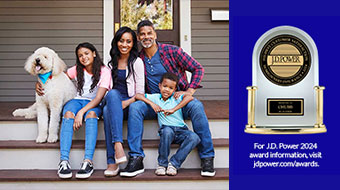- Individuals & Families
- Businesses
- Agents & Brokers
- Embedded Insurance

Chubb ranked #1 for Homeowners Insurance Customer Satisfaction.

Chubb ranked #1 for Homeowners Insurance Customer Satisfaction.

Chubb ranked #1 for Homeowners Insurance Customer Satisfaction.

Chubb ranked #1 for Homeowners Insurance Customer Satisfaction.

Because pets are family, Chubb now offers pet insurance with top-rated coverage from Healthy Paws.

Chubb offers the insurance protection you need for travel’s many “what ifs”.

Chubb protects small businesses at every stage – from newly formed start-ups to long-time anchors of the community.

Stay ahead of cyber threats with our free Cyber Claims Landscape Report.

Learn more about our dedicated learning paths, Online Learning Center, and more.

Many digital-savvy consumers look for it as a core or add-on option.

Many digital-savvy consumers look for it as a core or add-on option.

Many digital-savvy consumers look for it as a core or add-on option.

Chubb’s in-house technology makes it easy to integrate what we do into your customer experience.
-
About
-
Claims
-
Login & Pay Bill
For Agents & BrokersFor Travel Advisors
-
Back
Workers' Compensation Services
Chubb's risk engineers help to reduce or eliminate risk factors in the workplace that can contribute to occupational illnesses or injuries. The identification and mitigation of the causes of these injuries and illnesses contributes to savings of workers compensation expenses and reduces the indirect costs associated with workplace accidents. Among the available services are:
- Management consultation and training: Designed for managers and supervisors to develop and promote fundamental skills such as accident investigation, hazard investigation and control, workplace inspections, employee involvement, and safety leadership.
- Employee safety awareness programs: These programs are designed to help management establish programs to guide employees in preventing accidents by focusing attention on specific hazards such as safe lifting, occupational noise, ladder safety, machine guarding, and vehicle operation.
- Safety and health program assessment: By evaluating existing programs, we can help set standards for program implementation and allocation of appropriate resources.
- Slip and fall programs: Chubb has a comprehensive slip and fall loss prevention process that includes an analysis of losses, review of exposures, testing of floor characteristics and the evaluation of current management practices and procedures.
- Risk Assessment: Applying basic risk assessment techniques to safety and health exposures allows you to identify the hazards that pose the greatest threat to your employees, prioritize your reduction of those risks and quantify the reduction of occupational illness and injury risk.
- Safety Calendar: Download this year’s safety calendar for daily tips to help reduce risk exposures to you and your employees.
Ergonomic Assessments
Ergonomics focuses on the design of jobs, tools, objects, systems and environment for maximum human comfort, error reduction, and efficiency. Ergonomic injuries account for more than half of all workers compensation claims.
- Office Ergonomics: Repetitive motion injuries are the most common type of office injury, followed by back injuries and trips and falls. Workstation adjustability, change of task or minibreaks, and medical management are key to reducing the potential for injury and increasing workplace comfort.
- Industrial Ergonomics: Back injuries are the most common type of injury, followed by repetitive motion injuries. Force, frequency, lifted weights, and postural hazard analysis are key to mitigating these injuries. In many cases, a combination of engineering and administrative controls such as job rotation may be the only solutions.
An ergonomic assessment begins with a review of OSHA and injury reports to look for trends by job, task, or department. Ergonomic risk factors are identified through workstation and task analyses for force, frequency, or posture issues. Our risk engineers can conduct ergonomic analyses or we can train your staff to conduct them. Your own staff has greater knowledge of the tasks, tools, and potential solutions. Production engineers make excellent contributions to the success of ergonomic interventions, by making the process less ergonomically stressful and more productive.
Ergonomic services utilize effective techniques such as:
- Identification of potential musculoskeletal problems in the workplace through accident analysis, workstation analysis, task and movement analysis, and employee comfort feedback
- Teamwork Implementation by gaining management commitment and encouraging worker involvement, particularly for problem solving
- Training of management, supervisors, and employees
- Ergonomic Risk Assessment and Mitigation by assessing the potential for ergonomic injuries prior to and after the implementation of higher level controls
- Medical management of ergonomic injuries that emphasizes early detection, treatment and occupational health
Industrial Hygiene Services
Industrial hygiene services are provided by highly experienced and specially trained risk engineers. National Institute of Safety and Health plus Occupational Safety and Health Administration methods and guidelines are followed. State-of-the-art, calibrated equipment is utilized. All analytical work is conducted by American Industrial Hygiene Association accredited laboratories.
Noise Monitoring: Chronic noise exposure in the workplace can lead to employee hearing loss. Industries more likely to have chronic noise exposure include manufacturing, wholesale, construction, and utilities. Harmful noise levels can occur in any industry where noise producing equipment or operations exist. A noise assessment is warranted when two people standing in a work environment have difficulty carrying on a conversation. Chubb's risk engineers can conduct noise monitoring and compliance checks as well as assist in the development and implementation of a hearing conservation program.
OSHA regulations require companies to implement a Hearing Conservation Program where workers are exposed to a time weighted average noise level of 85dBA or higher over an 8 hour work shift. The elements of a Hearing Conservation program include:
- Noise monitoring
- Baseline and annual employee audiograms
- Annual training
- Recordkeeping
- Engineering noise control efforts
- Formal program development
Air Contaminant Monitoring: Air contaminant monitoring is conducted to determine employee exposure to harmful airborne substances, or to establish a baseline of the exposure. Air contaminant monitoring typically involves a comprehensive pre-assessment, including plant tour, meetings with specific personnel to acquire necessary exposure information, and review of Material Safety Data Sheets. Full shift or representative air contaminant monitoring is then conducted.
Indoor Air Quality Assessment: Should building occupants exhibit symptoms potentially related to indoor air quality such as headache, fatigue, dryness and nausea, an indoor air quality assessment may be warranted. These discomfort symptoms may relate to inadequate fresh air, but could also stem from personal health conditions or work factors. Indoor Air Quality (IAQ) assessments assist you in identifying building-related air quality problems and resolutions. An IAQ assessment generally consists of a building walkthrough, review of accessible heating, ventilation, and air conditioning (HVAC) systems, conversations with occupants and air quality sampling and analysis.
2025 Safety Calendar
Download this year’s safety calendar for daily tips to help reduce risk exposures to you and your employees.
*Spanish version of the calendar coming soon!

